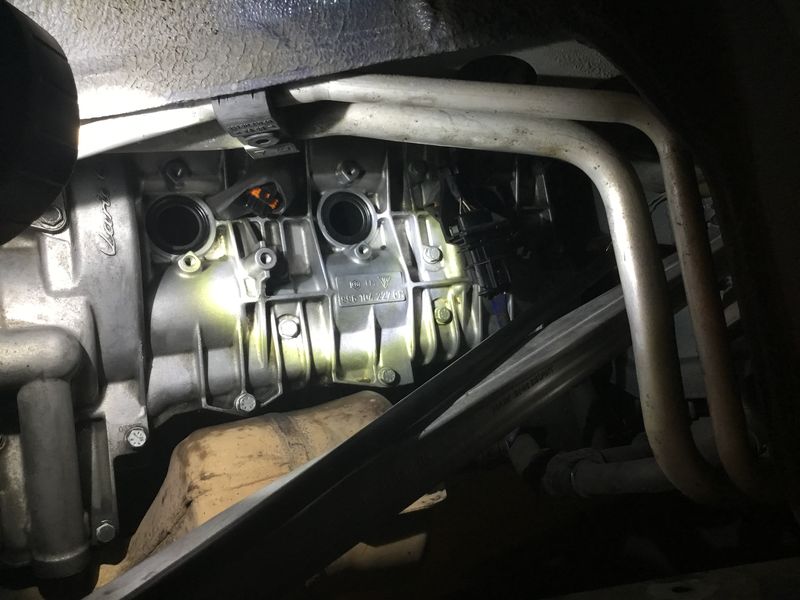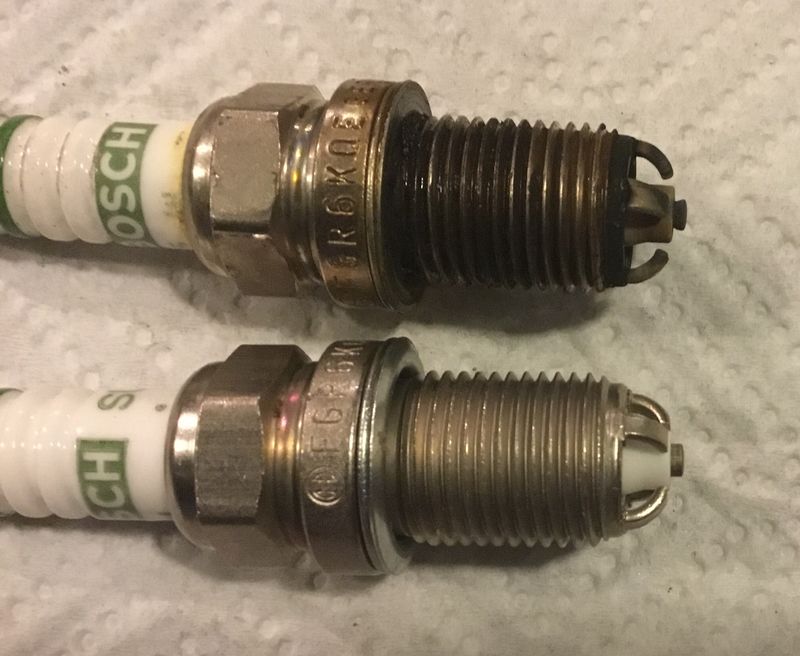At 120k miles, I changed my 2001 boxster 2.7's spark plugs yesterday, and replaced all the tube o-rings, whether they were leaking or not (to reduce chance of future leakage). Below in-flight picture offers a glimpse at the carnage...


To remove the tubes, I used the T-handle, rubber expansion "transom plug" discussed above. I didn't make the special tool to tighten the handle with a wrench - just used my hands. (I may have a bit more forearm strength than average, though, and my fingers are sore now... lol!)
Initially, I tried tightening and then pulling on the handle. This never worked, and the plug always slipped out of the tube (I had cleaned the interior of the tube, so it was dry.). What worked was to keep tightening the t-handle until the tube rotated. This broke the static friction of the o-rings free, and then the tube would practically fall right out if even the smallest outward force was applied. The transom plug preserved the original (genuine Porsche) tubes, so they could be re-used. I just replaced the o-rings on mine (using genuine Porsche o-rings, which weren't as expensive as one might guess!)
I feel cleaning and lubricating the conical and cylindrical outer o-ring sealing surface on the cylinder head is imporant, so I did that, in addition to lubricating the outer surfaces of the o-rings discussed here (although I just used motor oil, rather than silicone grease discussed here). The new tubes just snapped right into place by hand - no tools required, no drama.
Most of my time was spent cleaning parts. The cylinder head covers were filthy. Didn't get a "before" picture, but here's sort of an after:

Having these surfaces cleaned will make any future wrenching around these areas of the car so much more enjoyable!
I also cleaned and closely inspected the coil packs. They all looked perfect - no cracks and pretty indistinguishable from brand new after being cleaned up. A couple however, had damaged rubber lip, which I got a picture of and part number, but if the only purpose of the lip is to guide onto the plug, it may not be important to replace:

Thoughts?
The old spark plugs were absolutely horrendous to remove. Dry, squeaking, carbon-contaminated threads. Probably coked up oil, from the plug sealing washer not working perfectly. Required nearly as much "free-removal" torque, as the initial break-away! I was relieved there was no galled aluminum in the threads of the removed plugs.

On the new plugs, I used a light coating of anti-seize. Whoever at Bosch is recommending installing these plugs dry, should be shot. (Why wouldn't anti-size, with the metallic particles, conduct electricity?). The new plugs with light anti-seize coating hand-threaded in, and brought up to full torque spec like a dream! And the car also is running like a dream...

The old plugs had noticeable worn "conical shaped" center electrodes, (below shown below next to fresh plug), and the side electrodes were also burned away a little bit.

The wear maybe a bit much, or acceptable at time of replacement? Usually, the engine didn't seem to have any missing problem...
On the passenger side, I encountered one torn boot on the coil electrical connector:

What would be required to replace this? (Is replacement boot available or need whole harness)
I put a little dielectric grease on both the spark plug electrical terminal, and the male coil pack connector conductors. I did some other maintenance work at pretty close to the same time, the car is running stronger than ever now. Maybe waiting this long (120k, and not sure if these plugs were ever replaced by previous owner) is too long to replace? Jacking the car up, and removing all the shields and rear tires required to access the plugs makes the job a bit not-so-simple. Glad to have it done!